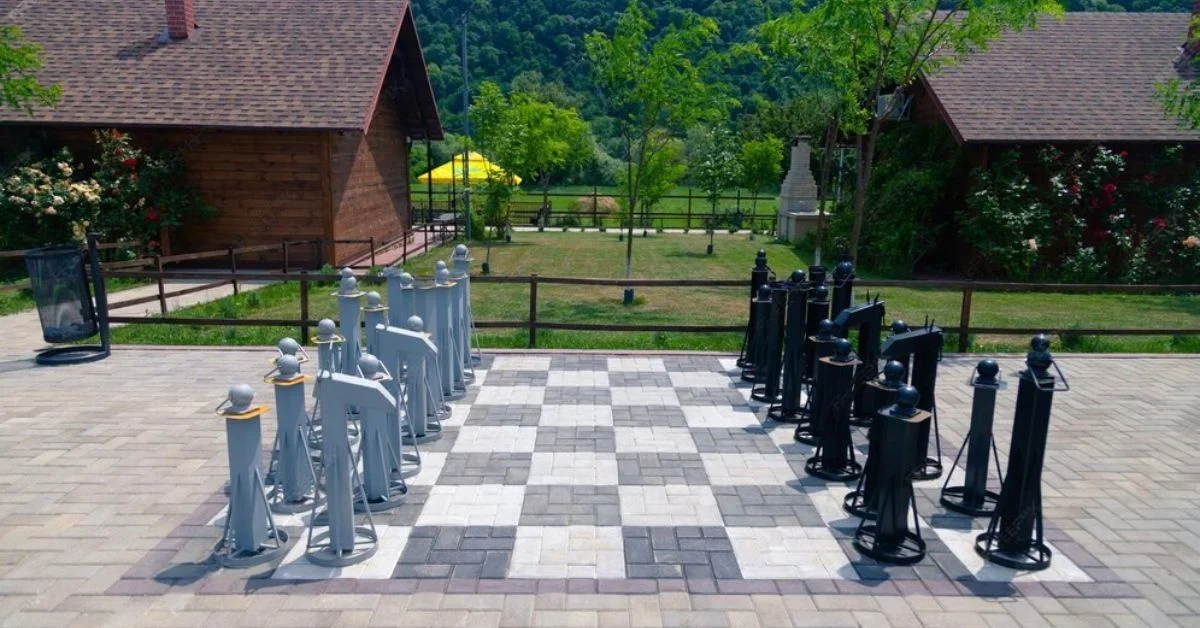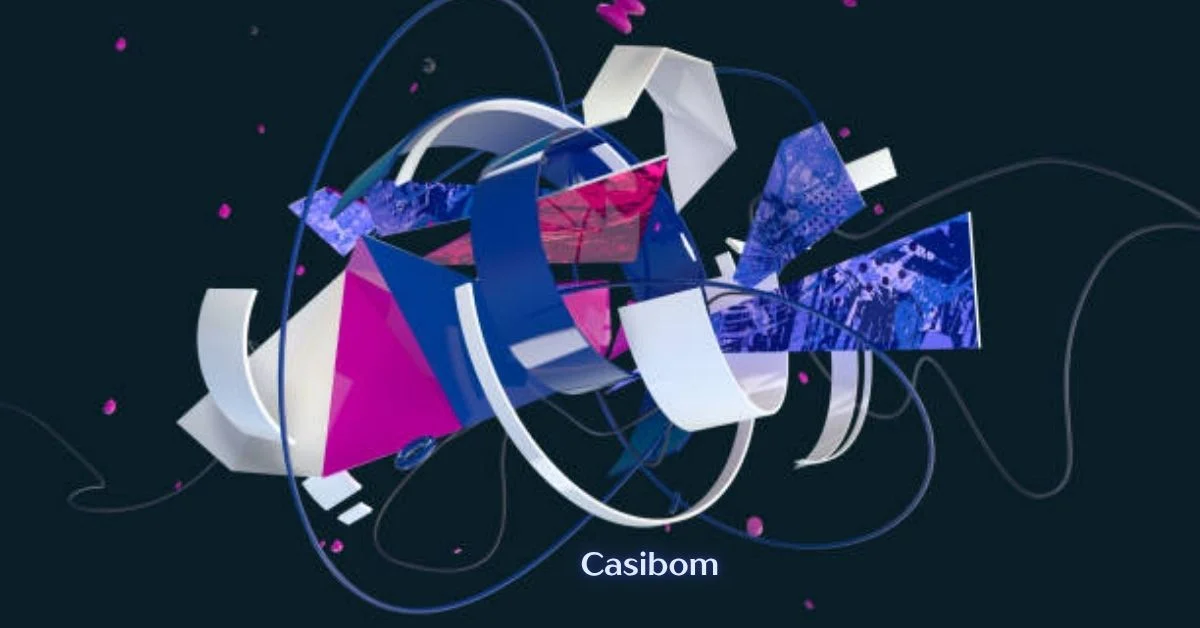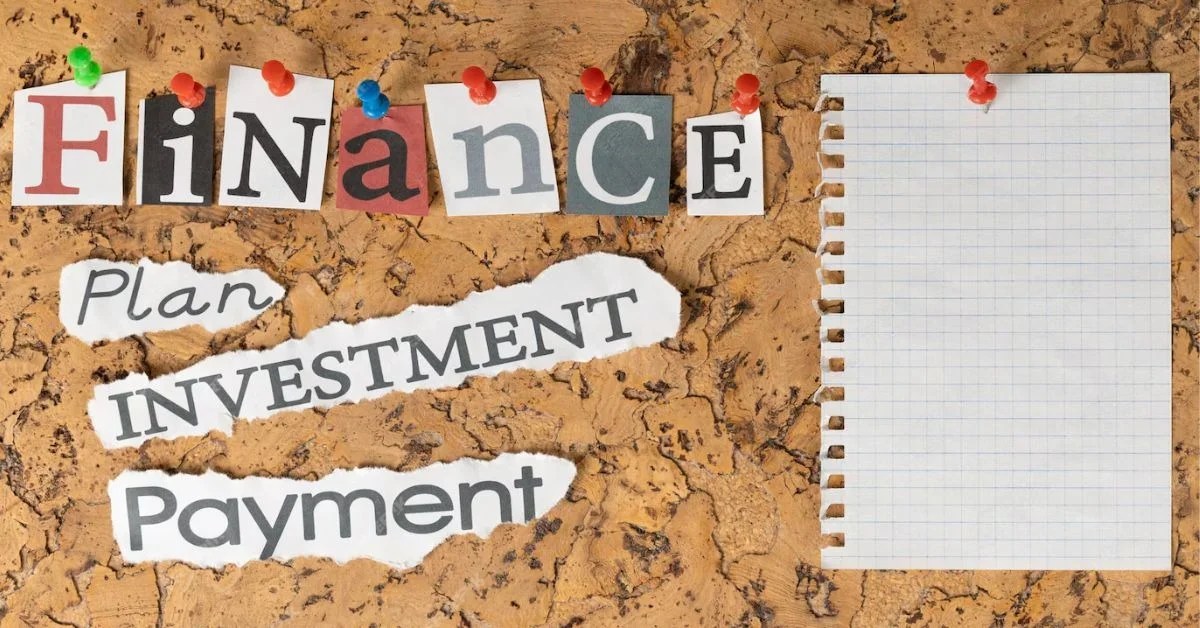TECHNOLOGY
Pitching Your Startup Story: Using WeSlides to Impress Investors

In the fast-paced world of entrepreneurship, where every second counts and first impressions can make or break a deal, the art of pitching your startup story is nothing short of crucial. Whether you’re seeking investment, partnership, or simply aiming to generate buzz, a compelling pitch deck is your ticket to success. Enter WeSlides – the AI presentation maker revolutionizing the way entrepreneurs craft and deliver their pitch decks to impress investors. In this article, we’ll explore the significance of pitch deck design services, and how leveraging WeSlides can elevate your presentation game to new heights.
The Importance of a Well-Crafted Pitch Deck
Before diving into the specifics of WeSlides, let’s first understand why a well-crafted pitch deck is essential for startup success. A pitch deck serves as a visual roadmap, guiding investors through the key aspects of your business in a concise and compelling manner. From showcasing your unique value proposition to highlighting market opportunities and financial projections, a well-designed pitch deck is your opportunity to captivate, persuade, and ultimately secure the support and resources your startup needs to thrive.
The Evolution of Pitch Deck Design Services
Traditionally, entrepreneurs relied on design agencies or in-house talent to create their pitch decks. However, this approach often came with its own set of challenges, including high costs, lengthy turnaround times, and limited customization options. Enter the era of pitch deck design services, where startups have access to specialized expertise and cutting-edge tools to create professional-grade pitch decks that stand out in a crowded marketplace.
Introducing WeSlides – AI Presentation Maker
At the forefront of this evolution is WeSlides, an AI-powered presentation maker designed specifically for startups. What sets WeSlides apart is its ability to combine the efficiency of automation with the creativity of human design, resulting in pitch decks that are not only visually stunning but also highly personalized and impactful. Here’s how WeSlides is transforming the pitching process:
1. Speed and Efficiency: With WeSlides, entrepreneurs can create polished pitch decks in a fraction of the time it would take using traditional methods. By leveraging AI technology, WeSlides automates many of the repetitive design tasks, allowing users to focus on crafting compelling content and refining their messaging.
2. Customization: Despite its AI-driven approach, WeSlides understands that one size does not fit all when it comes to pitch decks. That’s why it offers a high degree of customization, allowing users to tailor their decks to reflect their unique brand identity and storytelling style. From color schemes to fonts to layout options, WeSlides empowers entrepreneurs to create pitch decks that truly stand out.
3. Data-Driven Insights: In addition to its design capabilities, WeSlides offers valuable data-driven insights to help entrepreneurs fine-tune their pitch decks for maximum impact. By analyzing metrics such as engagement levels, slide effectiveness, and audience feedback, WeSlides provides actionable recommendations to help entrepreneurs optimize their presentations and increase their chances of success.
4. Variety of templates: WeSlides offers a diverse array of templates tailored for every pitch. From sleek and professional to bold and creative, there’s a template to match every startup’s unique style. With WeSlides, you can effortlessly customize your presentation with ease, ensuring your pitch deck stands out from the crowd. Explore the variety of templates on WeSlides and make your startup story shine.
Unlocking the Power of AI in Pitching
In a competitive landscape where innovation reigns supreme, harnessing the power of AI can give startups a significant advantage in the pitching process. By leveraging WeSlides, entrepreneurs can tap into the full potential of AI technology to create pitch decks that not only impress investors but also tell a compelling story and convey the unique value proposition of their startup.
Conclusion
In conclusion, pitching your startup story is an art form that requires skill, creativity, and strategic thinking. With the rise of AI-powered presentation makers like WeSlides, entrepreneurs now have access to a powerful tool that can help them craft pitch decks that leave a lasting impression on investors. By combining the efficiency of automation with the creativity of human design, WeSlides is revolutionizing the way startups pitch their ideas, helping them stand out in a crowded marketplace and secure the support they need to succeed. So why settle for mediocrity when you can harness the power of AI to elevate your presentation game and impress investors? Choose WeSlides and unlock the full potential of your startup story.
Creating a Pitch Deck on WeSlides
1. Signup/Login
Begin by signing up or logging into your WeSlides account to access the platform’s features and start creating your pitch deck. If you’re new to WeSlides, simply follow the prompts to create an account using your email address or preferred social media platform.
2. Choose Your Language
Select your preferred language for the presentation. WeSlides offers multilingual support, allowing you to create pitch decks in a variety of languages to cater to diverse audiences and markets.
3. Write Your Topic
Enter the title or topic of your pitch deck. This will serve as the focal point of your presentation and should succinctly convey the essence of your startup’s story or proposal. Choose a compelling and descriptive title that piques the interest of your audience.
4. Review the Suggested Headings
WeSlides provides suggested headings based on common sections found in typical pitch decks. Review these suggested headings, which may include sections such as “Introduction,” “Problem Statement,” “Solution,” “Market Opportunity,” “Traction,” “Business Model,” and “Financial Projections.”
5. Make Necessary Changes to headings
Customize the suggested headings and content to align with your specific needs and preferences. You can add, remove, or rearrange sections as needed to best tell your startup’s story and convey your value proposition to investors.
6. Add Visuals and Enhancements
Enhance your pitch deck with visuals, such as images, graphics, and charts, to make your presentation more engaging and memorable. WeSlides offers a library of high-quality stock images and customizable design elements to help you create visually appealing slides that complement your content.
7. Preview and Edit
Preview your pitch deck to ensure everything looks polished and professional. Take the time to review each slide for clarity, consistency, and coherence. Make any necessary edits or revisions to refine your presentation further.
8. Practice and Rehearse
Practice delivering your pitch using WeSlides’ presentation mode. Pay attention to your pacing, tone, and overall delivery. Rehearse until you feel confident and prepared to present your pitch to investors or other stakeholders.
9. Save and Share
Once you’re satisfied with your pitch deck, save your progress and share it with your team or collaborators for feedback. WeSlides allows for seamless collaboration, enabling multiple users to work on the same presentation simultaneously.
10. Present with Confidence
With your pitch deck finalized and ready to go, approach your presentation with confidence and conviction. Use WeSlides to deliver a compelling and persuasive pitch that effectively communicates the value proposition and potential of your startup to investors.
Creating a pitch deck on WeSlides is a straightforward process that empowers entrepreneurs to showcase their ideas and attract investment with ease. Whether you’re a seasoned founder or a first-time entrepreneur, WeSlides provides the tools and resources you need to create a standout presentation that leaves a lasting impression.
APPS & SOFTWARE
How To Manage Employees at Scale: Workforce Management Software

Companies that maintain a clear record of employee time, attendance, and tasks may experience boosted performance and improved bottom lines. Workforce management software enables labor-intensive organizations to maximize labor efficiency, minimize compliance risks, and develop strategic insight that improves business operations. Embracing a data-driven approach to management helps companies retain talent, cut labor costs, and adhere to labor laws. Here are a few ways workforce software can help you manage employees at scale:
Improved Labor Optimization
Management software identifies and alerts management to labor issues such as overstaffing or understaffing based on forecasted workloads. Workforce management software analyses historical data and business trends to align staff schedules with anticipated demand. It factors employee availabilities, skills, and preferences to generate optimized schedules that result in better timekeeping and adherence to deadlines. Businesses may experience reduced scheduling errors, optimized workforce utilization, smoother shift planning, and improved employee satisfaction due to fair and balanced schedules. Labor optimization increases productivity and success rates as each task is assigned and complies with the company’s workflow.
Enhanced Demand Forecasting
Accurately forecasting demand for a large and dispersed workforce, including remote employees, can present significant growth and operational efficiency opportunities. Miscalculated labor requirements lead to inefficient staffing that strains the budget and interferes with performance. A workforce management system uses artificial intelligence algorithms to predict workload volume for active operation days. The forecasted data can help management make informed decisions on when to increase or scale down the workforce. The software uses repeated data patterns to forecast future requirements, helping businesses to have better budget and resource allocation planning.
Automated Scheduling
Manual schedule creation is time-consuming for a large workforce, especially when different shifts and employee skills are involved. Workforce management systems are automated and generate schedules that align with forecasted demand, employee availability, and skill sets. Such systems allow for easy updating and making changes to the schedule. A workforce management tool features workforce sharing, smart templates, and shift swapping. It will enable staff to pick up open shifts or make changes that a supervisor approves. Automated scheduling streamlines administrative tasks and promotes equitable distribution of shifts.
Improved Time Tracking and Attendance
Employee attendance and time tracking help calculate the number of hours worked, overtime, and absences. Managing data tracking manually for a large workforce can pose challenges in terms of time consumption, error risks, and complexity. Workforce management software provides a more efficient solution by automating the time-tracking process. Employees clock in and out using their devices, eliminating discrepancies or manual calculations. This feature also helps managers better understand their employees’ productivity and identify any issues that may arise.
Improved Compliance and Reporting
Compliance with labor laws and regulations is a requirement for any organization. The laws stipulate maximum working hours, minimum wage, and overtime pay. Employees are entitled to rest, meal breaks, and a set number of vacation days. A workforce software ushers in automation and standardization, promoting law adherence. The software also generates comprehensive reports on employee data. The report makes it easier for organizations to monitor compliance and identify any areas of improvement. These reports can also aid in identifying trends and patterns within the workforce, enabling organizations to make proactive changes.
Enhanced Employee Engagement
Features in a workforce management system, including newsfeeds, polls, surveys, and scheduling communications, support effective information sharing across the organization. Highly engaged employees are more productive, have lower absenteeism rates, and stay with the company longer. Workforce management tools improve employee engagement in various ways. The software allows employees to view their schedules and adjust as needed, promoting transparency and control over their work hours. It provides a platform for employees to request time off, swap shifts with colleagues, and communicate with managers. This level of autonomy and communication fosters a sense of ownership and teamwork among employees. The software can track employee performance and provide top performers, further boosting engagement levels.
Maximize Efficiency With Workforce Management Software
Effective communication improves workplace efficiency and reduces errors. Workforce management software allows for streamlined communication between employees, managers, and HR personnel. The software sends automated notifications, reminders, and updates to keep everyone on the same page. It also provides a centralized platform for all employee information, eliminating the need for multiple manual systems. Investing in workforce software may lead to significant cost savings and improve organizational success. Implement workforce software into your business processes today.
GADGETS
Choosing the Right Driveway Bollards for Your Home: Factors to Consider

In every homeowner’s journey, there are selections and decisions to make that significantly impact the safety and aesthetics of the home. One such vital choice is selecting the appropriate driveway bollards. These security structures are increasingly becoming a commonplace in residential driveways. They provide safety, deter theft, enhance aesthetic appeal, and contribute to the overall value of your home.
Key Factors to Consider
Here, we are going to dig deep into several factors you need to consider getting the right driveway bollards.
1. Material
The choice of material for your driveway bollards plays a critical part in their durability, maintenance needs, and overall look. Popular materials include steel, stainless steel, aluminium, and concrete, each with its advantages and functionality.
2. Functionality
Driveway bollards can either be decorative or functional, or both. Functional bollards are usually stronger and are designed to resist vehicle impact, while decorative bollards enhance the visual appearance of your property. Consider your priorities before making a choice.
3. Design and Aesthetic Appeal
The design of your bollards ought to blend with the overall theme of your home. A mismatch could disrupt the aesthetic balance of your property. The colours, styles, and finishes are all important elements that will help ensure your bollards are in harmony with your home’s aesthetic.
4. Size and Placement
The size of your bollards and their placement determine their effectiveness in securing your property. For maximum barrier protection, ensure the bollards are placed strategically at your driveway’s entrance and exit points.
In Conclusion
Choosing the right driveway bollards requires thoughtful consideration of the aforementioned factors. Material, functionality, design, aesthetic appeal, size, and placement all are crucial elements that should be considered. It’s also worth noting that while bollards significantly enhance security, they should not interfere with the normal functionality of your driveway. A well-chosen set of bollards can be a great asset to your home, adding both practicality and aesthetic value. So take your time, do your research, consider the factors mentioned in this article, and you’re likely to come away with bollards that are fit for purpose, durable, and pleasing to the eye.
TECHNOLOGY
Best Practices for NEMT Providers: Safety, Reliability, and Compliance

In the healthcare industry, the role of non-emergency medical transportation (NEMT) services continues to become more critical.
These vital services bridge the gap between patients and their necessary medical appointments, ensuring that lack of transportation is never a barrier to healthcare access.
While availability is the heart of effective NEMT service, its foundational pillars are safety, reliability, and compliance. Each of these elements plays a crucial role in meeting and exceeding the expectations of patients and healthcare providers alike.
This article examines these ideals and how NEMT operators can effectively reinforce them in their businesses.
Ensuring Safety in NEMT Services
Safety is essential to any transportation service, especially in NEMT. Below are several ways to guarantee safety in your business.
Ensuring Vehicle Safety
NEMT vehicles must comply with safety standards and undergo regular maintenance checks to guarantee passenger safety.
This includes the mechanical integrity of the vehicles, ensuring each one is equipped to meet patients’ needs with the essential medical and accessibility equipment.
Driver Safety Training
Safety on the road transcends basic driving skills.
NEMT drivers must undergo comprehensive training covering safe driving practices, emergency response, and the unique needs of patients transported. This training should be ongoing, ensuring drivers remain at the forefront of safety and service excellence.
Patient Safety Measures
The well-being of patients during transport is a top priority.
Implementing rigorous health and hygiene protocols is essential, especially in today’s environment. Drivers must be trained in safe patient handling techniques to prevent falls and injuries and ensure patients’ secure and comfortable journeys.
Ensuring Reliability in NEMT Services
Proving to clients that you are trustworthy by delivering on your promises is crucial to the reputation and well-being of any NEMT business. Here are several ways to ensure your services are effective and reliable.
Efficient Dispatch Systems
At the center of a reliable NEMT service is a well-designed dispatch system.
Leveraging advanced software solutions enables efficient scheduling, route optimization, and real-time tracking for timely services.
Communication Protocols
Clear, open lines of communication with patients and healthcare providers form the bedrock of reliability.
This includes confirming appointments, providing updates on arrival times, and establishing a direct channel for feedback and concerns.
Contingency Planning
Unexpected events are part of the transportation world.
Having robust contingency plans in place for vehicle breakdowns, driver unavailability, or unforeseen delays ensures that the service remains reliable, even in the face of challenges.
Upholding Compliance in NEMT Services
While they may differ depending on state or region, every NEMT provider must comply with specific regulations from various entities.
Adhering to Regulations
Compliance with local, state, and federal regulations is non-negotiable.
NEMT providers must stay informed about the regulatory landscape and ensure that all aspects of their operation, from vehicle standards to driver qualifications, meet or exceed these requirements.
Medicaid Compliance
For many NEMT providers, Medicaid is a significant source of patient referrals and funding.
Navigating the complexities of Medicaid compliance, from understanding eligibility requirements to proper billing practices, is essential for operational success and integrity.
Data Security and Privacy
Protecting patient information is not just a matter of compliance; it’s a matter of trust.
Implementing stringent data security measures and ensuring compliance with HIPAA guidelines are critical in safeguarding patient privacy and securing sensitive information.
Continuous Improvement and Quality Assurance
The commitment to excellence in NEMT services is an ongoing journey.
Regular monitoring, patient feedback mechanisms, and quality assurance audits are essential in identifying improvement areas and ensuring the highest service standards are maintained.
Conclusion
Safety, reliability, and compliance are not NEMT buzzwords. These foundational principles help build successful services.
By following these best practices, NEMT providers can ensure they offer services that are needed and valued by the patients and communities they serve. In doing so, they contribute to the broader healthcare ecosystem and stand out as providers of choice in a competitive industry.

 ENTERTAINMENT4 days ago
ENTERTAINMENT4 days agoExploring the Kristen Archives: A Treasure Trove of Erotica and More

 TECHNOLOGY4 months ago
TECHNOLOGY4 months agoBlog Arcy Art: Where Architecture Meets Art

 LIFESTYLE4 months ago
LIFESTYLE4 months agoThe Disciplinary Wives Club: Spanking for Love, Not Punishment

 ENTERTAINMENT1 day ago
ENTERTAINMENT1 day agoKiss KH: The Streaming Platform Redefining Digital Engagement and Cultural Currents

 EDUCATION1 day ago
EDUCATION1 day agoLingrohub Platform: A Complete Student Access Guide

 TECHNOLOGY1 day ago
TECHNOLOGY1 day agoCasibom: The Digital Alchemy Reshaping Systems, Society, and Self

 HEALTH1 day ago
HEALTH1 day agoThe Surprising Benefits of Weight Loss Peptides You Need to Know

 BUSINESS1 day ago
BUSINESS1 day agoDiversifying Your Portfolio: The Key to Successful Investing in Portland, Oregon










